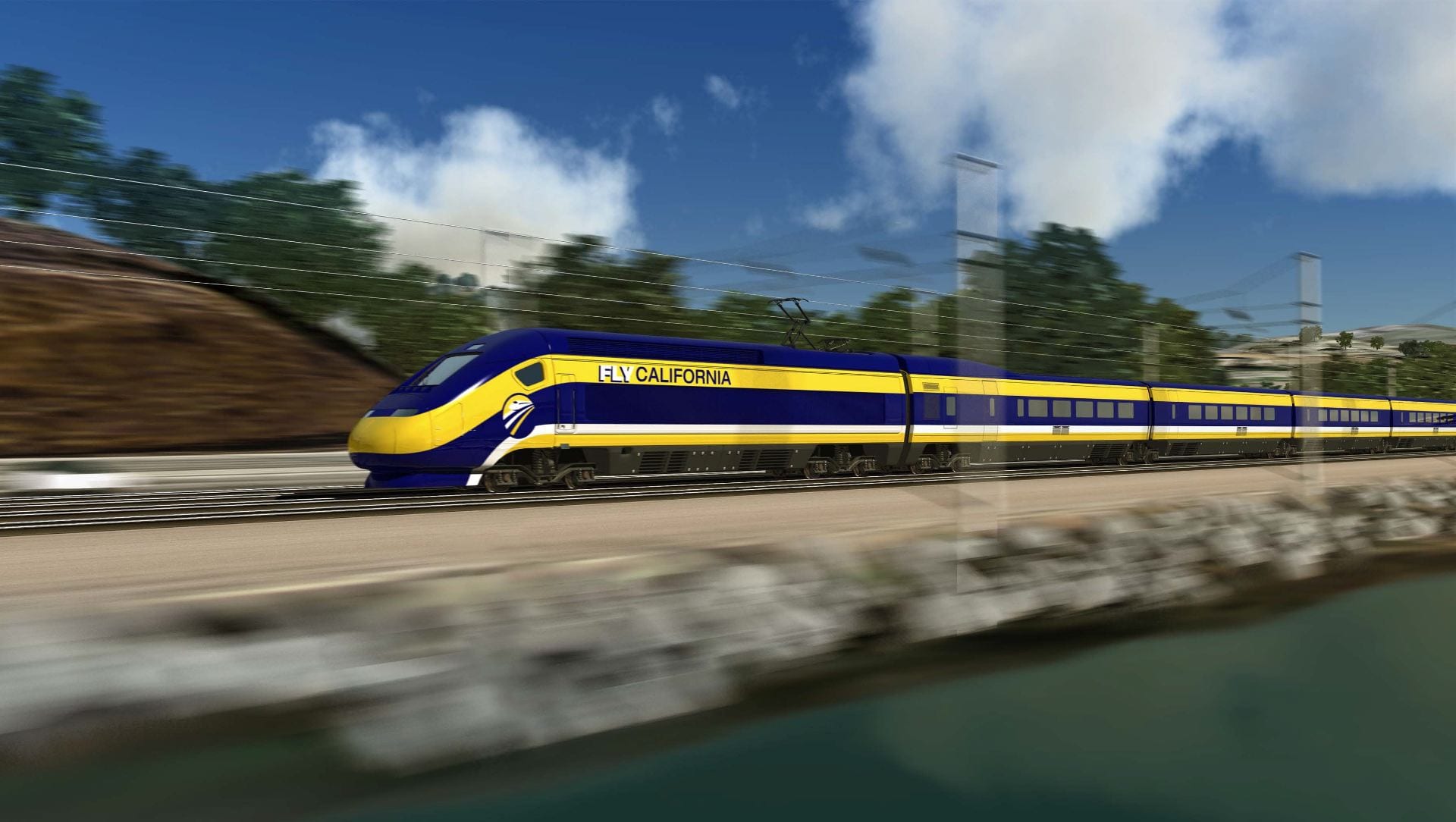
Last month, California Governor Gavin Newsom scaled back the California High Speed Rail (HSR) planned from Los Angeles to San Francisco due to budget and time overruns. The trimmed-down line will now run from Bakersfield to Merced – which was previously the Initial Operating Section (IOS) of the Bay-to-Basin alignment. With due respect to the Governor, this shortened “train-to-nowhere” version may never accrue the benefits necessary to justify the expenditure, and run counter to the fundamental principles of high speed transportation infrastructure.
High Speed Rail works when there is a combination of three factors – first, a route length of 300-500 miles; second, large catchments of population at either end with enough travel demand; and third, threshold density to ensure ease of access to the transit node. While the planned Phase 1 from Los Angeles to San Francisco satisfied all three conditions, this truncated version satisfies none. Whether the project in its entirety has turned out to be a boondoggle is debatable, but running as only its IOS in a relatively sparsely populated agricultural area, without a doubt, is one (Nagourney, 2018). Mega-projects are extremely expensive, with most expenditure necessary up-front, and with tangible benefits being realized only after completion. But without a chance to even begin its life-cycle, it may never do so. The IOS was meant to be a pilot for the engineering, required to work out the kinks in a technology never implemented in the United States. Instead, it may now require to operate as the entire project, a trial for which it was never intended. In all probability, this will become the poster child for failed infrastructure and will be detrimental to both this, and future, rail-based projects.

Without doubt, there has been an escalation of costs and time – mostly due to engineering challenges and land acquisition. In defense of the project team though, architects of infrastructure are expected to get everything one hundred percent right, but practically and unfortunately, some realities only become apparent by way of failure (Flint, 2015). If Boston’s Big Dig is anything to go by, even with cost escalations and time overruns that earned it ridicule over the better part of a decade, today, ten years after the opening of the project it has undoubtedly delivered planned, and even unplanned, benefits. It is illogical to base the debate solely on the overall costs, and the pessimistic model at that. The aspect of delivery is what must be tested against, and the costs suitably studied alongside benefits. Though a Benefit-Cost analysis has not been executed since 2013, the original study can still be used as a point of reference. The project, as planned in its totality, had a Benefit-Cost ratio of 2.35 (California HSR Authority, 2014). Even if one assumes the worst-case scenario where there is no increase in benefits and indeed a doubling of costs, the project still has 35% more benefits than costs. Considering that the original benefits themselves did not consider land use and land value impacts, improved economic productivity, and increased connectivity to urban rail corridors, clearly the project’s net benefits suggest that it is a winner.
So how does California redeem this project? In the State of the State address in which the project was derailed, Gov. Newsom directed blame towards its lack of oversight and transparency. This would be a good place to start. Instead of an additional agency, could the California HSR Authority evolve into a supervisory role? Could this open the possibility for a public-private partnership, not just to build, operate, and transfer, but also to arrange financing? Most importantly, could this be viewed as not ‘just’ a transportation project, but rather a spine along which the state can direct its future economic growth? In fact, of all the considered benefits, 91.9% are associated with furthering the economic competitiveness of the state (California HSR Authority, 2014). One must only look at the development that followed the path of the interstate system in the post-war era to realize the potential on offer. This interim moratorium on the project can serve one important aspect that should perhaps have come much earlier – working out the financing for the entire first phase rather than only the IOS. The potential development and ignored land use benefits would be key to this and could ensure a share of the pie through land value capture mechanisms. Whatever the way forward, it is hoped that as one of the richest and most progressive states, California can be a shining light for how regional infrastructure development occurs over the next century.
NOTE: The material in this post is part of an ongoing debate in PADM 5575: Infrastructure Finance that covers project evaluation, financing strategies, and the public policy aspects of mega-infrastructure projects.
—
References
Attarzadeh, M., Chua, D., Zhu, L., & Beer, M. (2012). Life-cycle financial modelling of long term infrastructure projects “PPP-BOT projects” under uncertainty and risk. Life-Cycle and Sustainability of Civil Infrastructure Systems – Proceedings of the 3rd International Symposium on Life-Cycle Civil Engineering. Vienna: IALCCE.
California HSR Authority. (2014). California High-Speed Rail Benefit-Cost Analysis. Sacramento: California High-Speed Rail Authority.
California HSR Authority. (2018). Draft Business Plan 2018. Sacramento: California High Speed Rail Authority.
Flint, A. (2015, December 29). 10 years later, did the Big Dig deliver? The Boston Globe. Retrieved February 21, 2019, from https://www.bostonglobe.com/magazine/2015/12/29/years-later-did-big-dig-deliver/tSb8PIMS4QJUETsMpA7SpI/story.html
Nagourney, A. (2018, July 30). A $100 Billion Train: The Future of California or a Boondoggle? The New York Times. Retrieved February 28, 2019, from https://www.nytimes.com/2018/07/30/us/california-high-speed-rail.html
